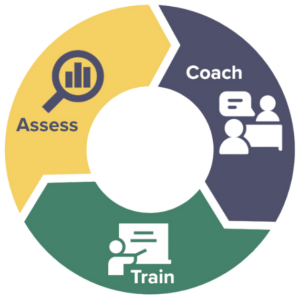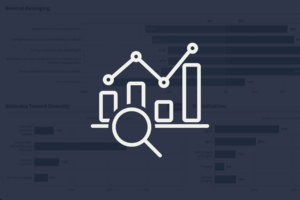This article first appeared in American DBE Magazine’s Summer 2020 Issue (page 16).
The impact of COVID-19 has fundamentally shifted the business landscape, causing growing uncertainty for most industries; and the engineering and construction (E&C) marketplace is not exempt. While projects are beginning to come back online, construction managers are struggling to fill jobs. Contractors are experiencing challenges in accessing a steady labor force due to growing fear among workers of contracting the virus. Many employees receiving unemployment benefits feel that coming back to work does not make financial sense given the uncertainty of future wages. Numerous projects are being delayed, leading to challenges with cash flow and payments to employees and contractors.
In addition, construction managers are dealing with an uptick in internal human resources disputes involving the general workforce, craftsperson or subcontractor due to increasing uncertainty related to health, safety and the COVID-19 recovery timeline. With the rise of workplace tension, it is inevitable that the impact of bias will begin to impact the prospects of diverse suppliers. History shows that diverse suppliers experience the brunt of economic shifts as access to capital tightens. This phenomenon forces diverse suppliers to be resourceful and innovative in order to withstand difficult market conditions. Given this reality, E&C organizations should invest even more heavily in supporting supplier diversity programs. However, supplier diversity activity may be reduced as organizations recalibrate key initiatives in the face of pandemic-fueled changes. The reason for this is due to bias.
Bias is disproportionate weight in favor of or against an idea, person or thing; usually in a way that is closed-minded, prejudicial or unfair. People may develop biases for or against an individual, a group or a belief. Conscious bias, or explicit bias, refers to the attitudes and beliefs held about a person or group on a conscious level. Unconscious bias, also known as implicit bias, refers to the attitudes or stereotypes that affect understanding, actions and decisions in an unconscious manner. It is a bias that happens automatically and is triggered by the human brain, making quick judgments and assessments of people and situations – also influenced by background, cultural environment and personal experiences.
Biases within an organization create missed opportunities when people make decisions that are not objective and potentially contribute to a distrustful culture that will rob it of competitive advantage. An example of unconscious bias in a supplier diversity context is dismissing new solutions to problems because they do not fit the typical way solutions are presented. A study done by The Hackett Group shows that procurement organizations that embrace supplier diversity are able to generate up to 133% higher return on their investments versus organizations that don’t.
Organizations that do not have a robust supplier diversity program are missing opportunities to strengthen their overall brands with customers. A recent study done by Hootology, using its Supplier Diversity Impact Indicator (SDII), found that among those who are aware of UPS’s supplier diversity initiatives, they are 86% more likely to use UPS’s services than those who are not aware.
The key question to ask is how companies can reduce the impact of unconscious bias that could limit the focus on supplier diversity in organizations? In particular, what is the best approach to address biases that limit an organization’s ability to make sound business decisions, particularly in the area of supplier diversity? The first thing that must be done is to make the unconscious, conscious through education. It is critical to help members of an organization develop a mindset shift that embraces identifying and understanding biases so that they can be confronted and addressed. Next, the organization must examine the policies, practices and structures that cultivate bias. This systemic evaluation is not a one-time initiative, but rather, an ongoing process.
4 Steps to Confront Unconscious Bias in Supplier Diversity
Gather Facts
The key element of eliminating bias is to make data-based decisions rather than relying on gut, intuition or conjecture. This is particularly important when evaluating relationships with diverse suppliers. This requires creating a process that allows relationships with diverse suppliers to be measured like any other partnership. This should go beyond tracking diverse supplier spend and the number of relationships in order to evaluate the true relationship impact. Key metrics that should be evaluated include:
- Cost savings realized through the partnership
- New revenue opportunities created via partnership
- New ideas created through the partnership
- Engagement of the partner within organization
When data is collected on the success of supplier diversity that is at this level of depth, there is a much better connection to business value.
Create a Structure for Evaluating the Supplier Diversity Program
Define clear criteria to evaluate the merits of diverse supplier relationships and use them consistently. Using consistent standards can help to reduce bias. For example, create a supplier diversity partnership guide that can be used to objectively evaluate the organization’s current program and the effectiveness of all current and prospective suppliers’ relationships. WEConnect International has developed a tool that includes the following elements to guide program evaluation:
- Policy Assessment
- Planning
- Processes and Standards
- Measurement, Tracking and Reporting
- Accountability
Be Mindful of Subtle Cues
When meeting with diverse suppliers or attending recruiting events, be sure to be fully engaged. Invite diverse suppliers to events where all suppliers or partners are present including after-hours events. Be sure that communications who are sent to partners are also sent to diverse suppliers. This intentional inclusion will help to create higher levels of engagement with diverse suppliers and increase the likelihood of success.
Foster Awareness
In day-to-day interactions, be sure to hold yourself—and your colleagues— accountable. The key to identifying blind spots is to raise questions and opinions when key decisions are being made. For example, Google created a “bias busting checklist” to eliminate snap decisions and mitigate the consequences of unfair judgements. This same approach can be applied to interactions with diverse suppliers. When evaluating supplier diversity performance and putting together interventions to help build capacity, here are few questions or areas to address to identify blind spots in evaluation:
- Consider concrete examples of performance throughout the evaluation period
- Consider situational factors that affected performance (e.g. lacked access to resources or information)
- Consider if rating would change if supplier was in different cultural group
- Be an advocate for diverse suppliers in which you are invested
What Can Diverse Suppliers Do to Counteract Unconscious Bias?
While supplier diversity is increasing in importance for many organizations, diverse suppliers are continuing to experience challenges in getting connected to companies. In a recent report by CVM Solutions, diverse suppliers described challenges navigating portals and the application process required by many organizations. This creates resistance when trying to identify and pursue new opportunities. The report also highlighted the benefits that supplier diversity can deliver to partner organizations – workforce impact and interaction, supply chain impact, and ultimately increasing the diversity of the partner’s workforce. The next installment of this series will highlight an organization that has counteracted unconscious bias to create success.














